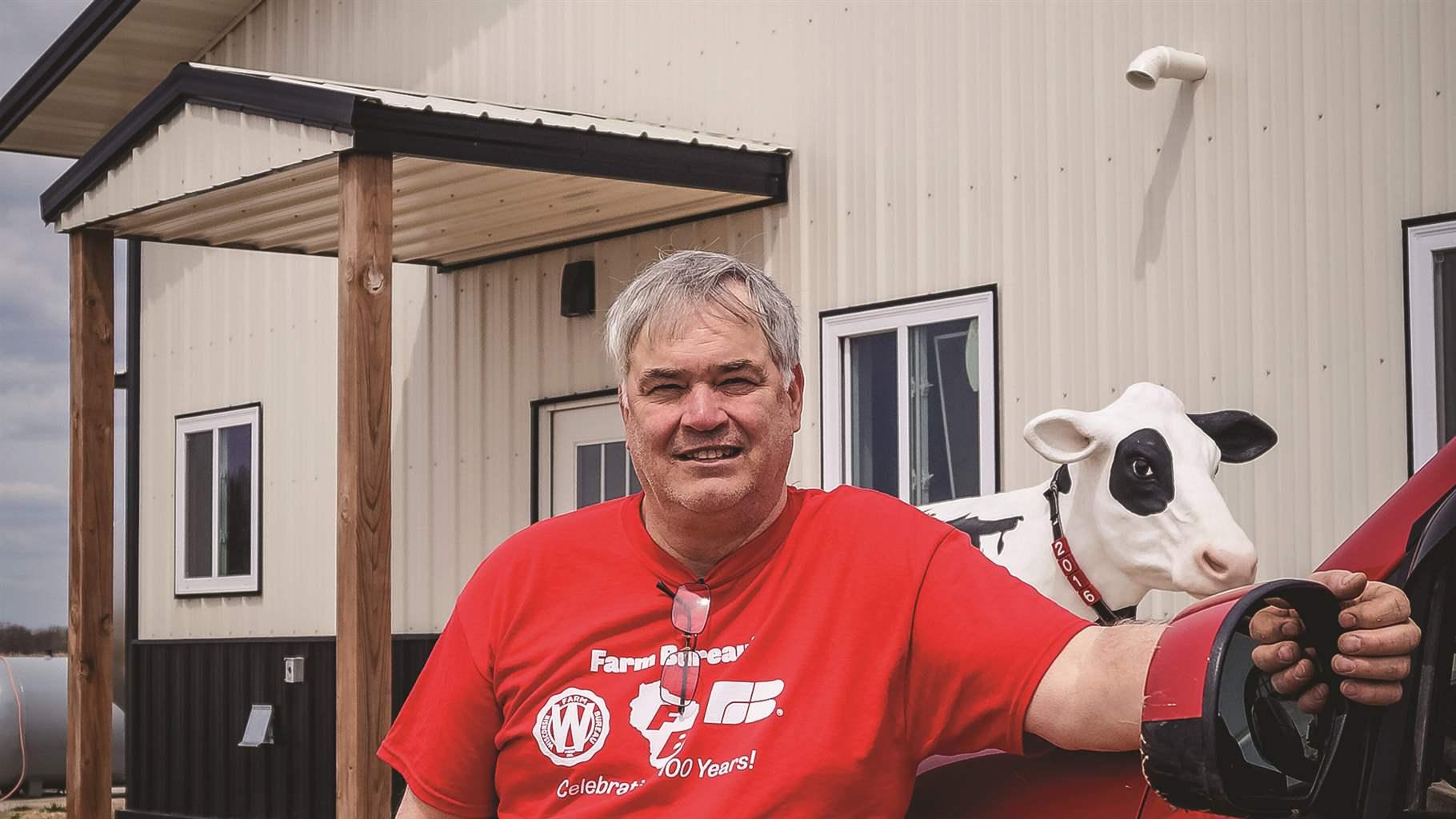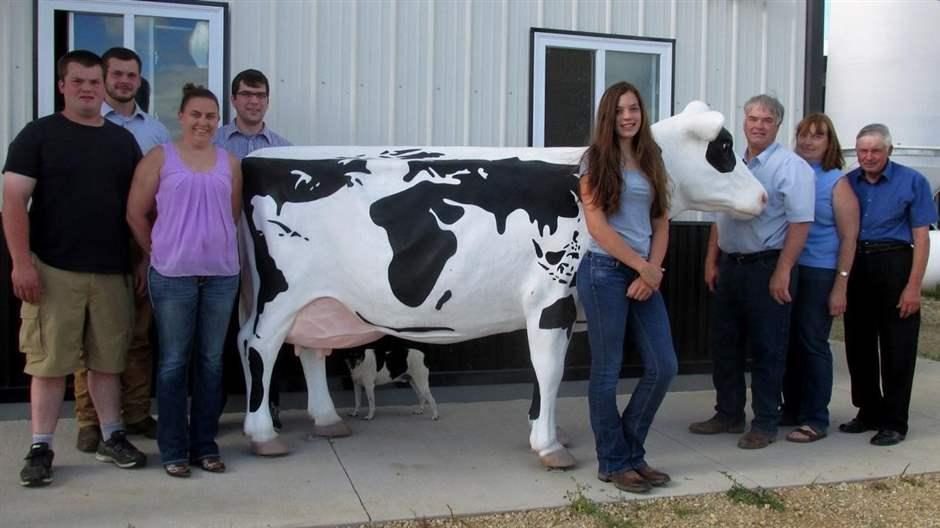Wisconsin Farmer Hopes to Grow Solutions to Flooding
Community leader and state climate change task force member looks toward a more resilient future

Vernon County Farm Bureau President Robert Nigh and his brother, Randy, run LIRR farm in Viroqua, a town of a little more than 4,000 people in western Wisconsin about 20 miles from the Mississippi River. The brothers still struggle with an issue faced by their parents, who started the farm in 1949: flooding. Throughout 2020, Nigh served on the Governor’s Task Force on Climate Change, which featured representatives from across the state and from a variety of occupations and backgrounds working together to develop policy recommendations on flooding and other climate-related issues. One consensus measure arising from the task force’s work is the creation of a state-led flood resilience plan to help communities across Wisconsin plan for future risk at a watershed level and to identify and fund projects, such as restoring wetlands and other nature-based flood mitigation strategies.
This interview has been edited for clarity and length.
Q: How has flooding affected your family’s farm?
A: Well, flooding is something we’re kind of used to, down here in the Bad Axe [River] Valley. My parents were flooded out in 1950 and 1951, right after they started the farm, and it took them a year to get everything restarted.
Q: But the storms have gotten more frequent and intense since your parents were running the farm.
A: I’ve lived through several 500-year floods and probably a couple of thousand-year floods within the last 10 years. And it’s an added stress. It’s kind of like any disaster: We remember what happened. Extreme flooding events live in our memory banks forever.
Q: Can you give us an example?
A: Since my brother and I have been running the farm, some of the more major floods really destroyed growing crops: That water came up and just flattened the crops or made them unusable for livestock because they molded the corn. We did lose some livestock in one of the flooding events; we never did find out where they went, but they were just gone. We lost a pickup truck. And near the stream that runs through our property, we lost soil by the dump truck loads, maybe 50 to 100 dump truck loads, which moved the banks back 10 to 20 feet.
Q: Besides these immediate impacts, are there longer-term consequences of these floods for your livestock and crops?
A: A lot of our fields have suffered some yield loss, maybe 10 to 20 percent. And others are no longer productive or profitable for us to utilize because there’s just too much damage and soil loss and rocks and debris from upstream. It’s amazing what floodwaters can do. We actually moved our dairy to the ridge, so we didn’t have to worry about the flooding for our livestock.
Q: What about your friends and neighbors?
A: Some have lost more. Some have had to move their cattle and their buildings and their homes to an area that is less flood prone. Some lost homes, garages, even their whole farmsteads. There were people who lost everything—just swept it all away.
Farmers, you know, we’re used to working with the weather, but these extreme events are pretty difficult to manage, if not impossible. Mother Nature is pretty powerful.
Q: Of course, a flood doesn’t have to hit your farm to hurt your business, right? You need roads and bridges in order to get access to markets and supply chains.
A: In the dairy end of our operation, where we have a perishable product in milk, without roads we don’t have a market. Sometimes floods create extra travel time and distance: We have to even go virtually twice as far because we can’t access a bridge or the roads have been washed out. I’m on the fire department, and sometimes it’s difficult during a flood event getting from point A to point B without going through C,D, and E.
And the flooding on the Mississippi River about three years ago prevented us from getting our fertilizer by barge. They had to bring it in by rail, which raised the price. And many people, ourselves included, couldn’t get the fertilizer in a timely fashion, so we weren’t able to put it on at the right time or get enough to put on, which hurt our crop yield.
Q: Are there any land management practices, such as restoring wetlands, that you’ve seen help reduce the impacts of flooding?
A: We’ve done a pretty good job on what I’ll call the more normal floods. We’ve got some of the retention ponds where we repurpose water for livestock or other uses; some of those ponds actually let the water slowly leave over a period of several days instead of it all at once. Some of the neighbors have put wetlands in so that when the stream overflows the water can go into the wetlands and it doesn’t run off. We don’t have the right location for that based upon how our farmland lays, but it’s worked really well for some of the neighbors.
Q: The Task Force on Climate Change recommended that the state begin a comprehensive planning effort to prepare for flood disasters. What would that state leadership mean for your community?
A: I’m very happy with the task force and also the fact that the report is done. These issues don’t have boundary lines. The boundaries are the watersheds, and sometimes these watersheds cross state lines and even countries. What happens upstream affects those downstream, so we’re trying to look at things on the watershed level. We all need to work together.
Q: What sort of resources does your community need to help prepare for future storms? What would you tell state leaders to prioritize first?
A: I think we need to have a proactive approach to flooding. It always seems like we need dollars, but to throw money at a problem without a really good plan is really wasteful. We ought to identify areas where we can make improvements so that there’s not that impact to families, businesses, and the other community services. We’ve come a long way, but we’ve got a ways to go if these events keep happening.








